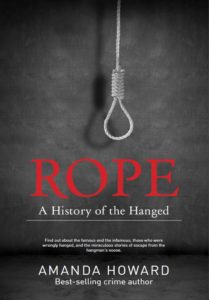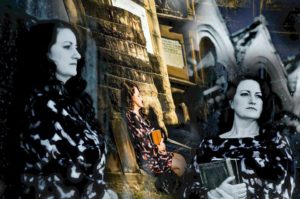
A dead man drinking a cocktail
The blood drained from my upper body. Dr. X stood before me, a cocktail in one hand, very much alive. But Rick had told me he’d died earlier in the year.
Without question, one of the most awkward social situations anyone can encounter is running into someone they thought was dead. My encounter with the living Dr. X happened to me at a Christmas party in the early nineties. I was working as a staff attorney for the Washington State Department of Health and attended its holiday celebration at a hotel in Tacoma.
There stood Dr. X, talking, laughing, breathing.
I’d only known Dr. X as a casual professional acquaintance. So when Rick, a physician friend of mine, told me he had died, I accepted the information with detachment. And I had no reason to doubt it until I saw Dr. X standing there and I felt my face go white. I stifled the most automatic response – “What?! But I thought you were dead!” What would Miss Manners say? I tried to act natural. I shook his hand in greeting. His hand was warm; he was really alive. I politely disengaged myself from Dr. X before my shock betrayed me, secretly glad I was wearing lipstick. Because Dr. X couldn’t see the blood drain from my lips.
How would have you handled this situation?

The walking dead in Amanda Howard’s new book
Because I’ve experienced the dismay of encountering the walking dead before, I felt for some of the people in Amanda Howard’s new book, Rope: A History of the Hanged. She recounts stories of those whose shock must have been much worse. She tells of those who’ve encountered living people declared dead – criminals who survived their hangings and returned to shock the public, or even worse, of the most egregious mistake the judicial system can make. Occasionally, someone found a supposed murder victim alive after a purported murderer had already been hung.
Amanda Howard graciously let me print an extract from her book that tells just that sort of a story. Perry’s case is an English story, but it changed the American legal landscape.
Perry’s Case
William Harrison, steward to the Lady Viscountess Campden disappeared on August 16, 1660. The 70-year-old man left his home in Chipping Campden, Gloucestershire for the two-mile walk to Charringworth to collect rent. He had taken the trip many times before and would always return by evening. When Harrison had not returned by supper, his wife sent a servant, John Perry to look for him but he also went missing.
Perry claimed that he had been afraid of the dark and had returned home for his master’s horse to continue his search well after midnight when the moon was full and illuminated his way. Early in the morning, a mist fell over Charringworth and Perry had become lost, only finding his way when he came upon Edward Harrison, William’s son.
The following day, Mrs. Harrison had sent her son Edward to look for the two men and he came upon John Perry. The servant told Edward that he had no luck finding the elderly gentleman. They visited the homes that William would have visited and found that he had been to some of them.
Perry and Edward Harrison headed back to Campden. On their way, they found a hat, band, and comb which belonged to William. The two men began a search nearby having “suppose[ed] he had been murdered, the hat and comb being hacked and cut and the band bloody, but nothing more could be found.” At this stage, the entire town began a search for the man.
Mrs. Harrison grew suspicious of John Perry and claimed that his whereabouts were suspicious. Perry was interviewed numerous times by the local Justice of the Peace but confessed nothing except for what he had done that evening when Harrison had gone missing. Finally, after a week of questioning, Perry claimed that Harrison had been murdered but he did not know who had done it. He then changed his confession to claim that his mother, Joan, and brother, Richard, had killed the man.416 He claimed that they had killed Harrison, taken his money and hidden his body. Joan and Richard Perry were quickly arrested for the man’s murder and sent to trial.
Though all three pleaded guilty to the murder, the judge refused to accept the plea and neither did the jury. The trial ended without convictions. A second trial, where all three pleaded not guilty, saw them all found guilty of the man’s murder and sentenced to be hanged.
Within the week of the second trial in 1661, the trio were executed.
Joan was hanged first being declared a witch, followed by Richard, then John.
Three years after the Perry family were hanged, William Harrison returned to Campden looking disheveled and drawn. He claimed to have been “carried away beyond the seas.” He claimed that three men on horseback accosted him, made him mount one of the horses and took him away to a place called Deal where he was sold to a ship owner called Wrenshaw. He was then passed to other owners including a surgeon before finding his way back to Campden. Though many doubt his story, it is nonetheless tragic that three innocent people lost their lives for a murder that did not happen.

Perry’s case and the corpus delicti rule
This case tragically illustrates the importance of the corpus delicti rule in preventing wrongful convictions. Corpus delicti means “body of the crime.” In American law, it requires the prosecutor to present evidence that a crime was actually committed even if the defendant confesses; it protects those who confess to imaginary crimes due to coercion or mental illness.
Corpus delicti is what makes it so hard to prove no-body murder cases. In fact, it was this case, the so-called “Perry’s case,” that formed the legal foundations of the corpus delicti rule.
I got off much better than the defendants did in Perry’s case – I only suffered a shock. When I saw Rick again, I let have it. How could he be so careless with the facts and tell me a professional acquaintance of mine had died when he hadn’t? But Rick just shrugged and said he must have made a mistake.
That’s just the point. Errors happen – in private conversations, in the courtroom, and at the end of the noose. When they do, they can turn lives upside down. And some, like Perry’s case, can change the law.
The corpus delicti rule has recently fallen into disfavor. Some courts have abandoned it in favor of a looser corroboration rule, arguing that Miranda rights are sufficient to guard against false confessions. What do you think?

Amanda Howard biography
Amanda Howard is a true crime author, fiction writer and serial killer expert who has written 18 books. This includes ten books on a wide range of true crime cases. She has also interviewed some of the world’s most heinous serial killers over two decades and has collected a vast pool of information on various types of killers, their motives and rituals. Coupled with this are studies of criminology, law and psychology.
Amanda has appeared in many critically acclaimed international documentaries regarding famous serial killers, including Jack the Ripper, The Backpacker Killer, David Birnie as well as acted as a criminal consultant on many more. She authored many journal articles on serial killers as well as been a guest on crime shows on radio, online, television and in print. Amanda has worked as a consultant for many current affairs and news programs in Australia regarding vicious crimes, juvenile murderers, serial killers and sex offenders.
Following on from her successful career as a non-fiction author, she has coupled her knowledge of serial killers to develop a series of novels following the life of a police detective who is an international expert on ritual crimes and ancient societies. The fourth book in the series, Shrouded Echoes will be released in November 2016. She has also released a series of short stories and novellas.
Amanda is also currently studying for her Masters of Arts (Writing) and runs successful YouTube channels: Truly Disturbing, Mystery and History, Botched Executions and Forgotten Brutal Crimes.
Literature on point:
Amanda Howard, Rope: A History of the Hanged (New Holland Publishers, September 2016).
David A. Moran, “In Defense of the Corpus Delicti Rule,” Ohio State Law Journal (2003) 64:817-854. Page 828 discusses Perry’s case.



